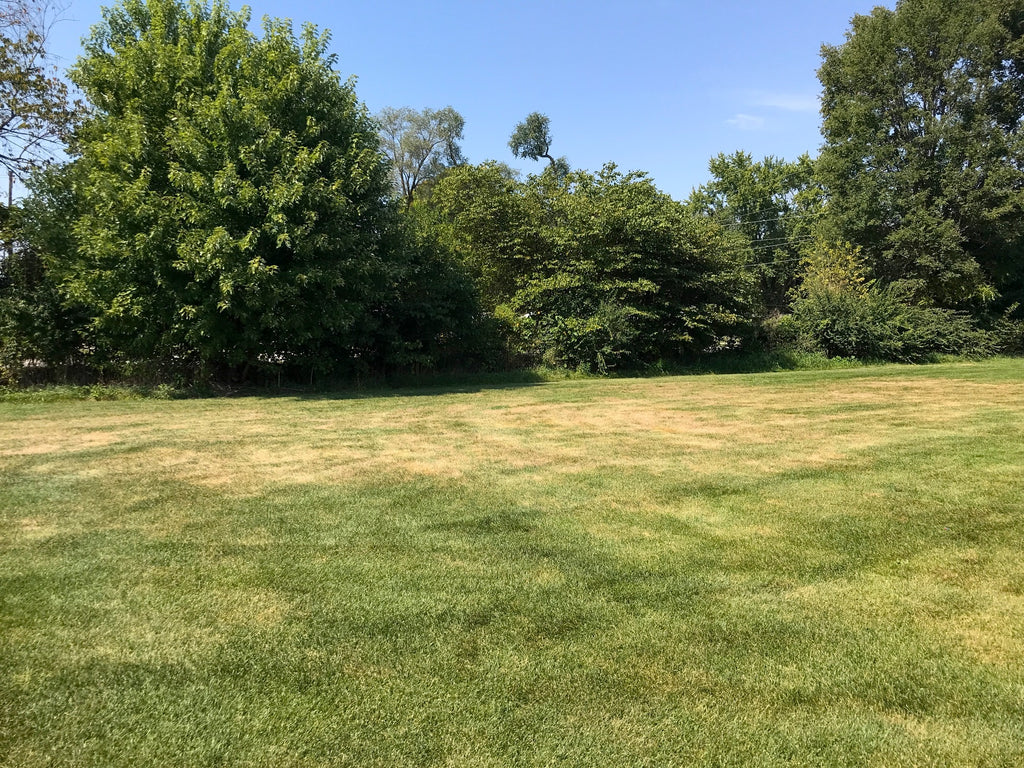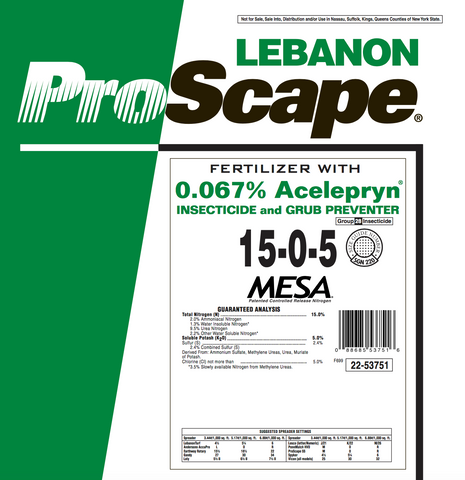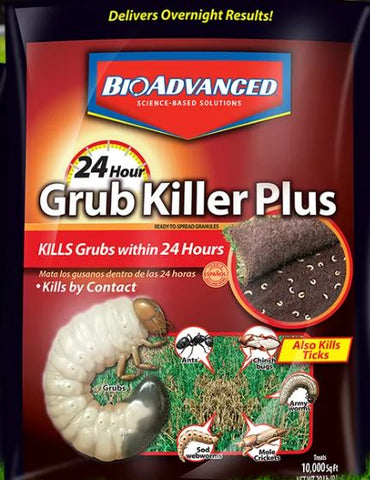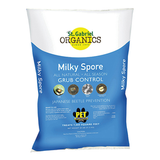White grubs are the larvae of several beetle species, but in our region, the Japanese Beetle is one of the most common lawn pests. These grubs feed on turfgrass roots, causing damage that weakens lawns and reduces winter survivability.
Understanding the life cycle of grubs is essential for timing treatments and achieving the best results. At The Mill, we recommend combining our “5-B” Principles of Lawn Care with an integrated grub control approach for sustainable success.
The Grub Life Cycle
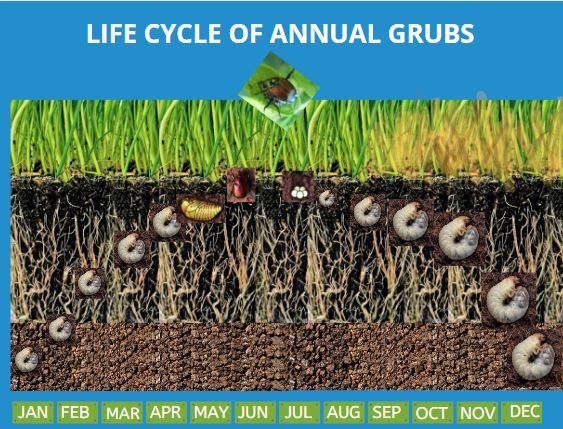
Grubs are the larvae of beetles. Annual grubs usually have a 1 generation life cycle which means you may need to incorporate both preventative and control measures for several years if grub populations are high. A multiple strategy approach will provide the fastest results if you are seeing turf damage from grubs.
When an adult lays eggs in June and July, small larvae emerge and begin feeding on roots from July-September. Turf damage will be evident in August with brown patches of dead grass that slowly expand and the turf may seem loose in those areas.

You may also see increased moles, skunks, raccoons, or birds in heavily infested areas. Pulling back the turf from the roots will reveal grubs in the top few inches of soil. As fall approaches, they feed voraciously on turf roots to fatten up for winter hibernation. As soil temperatures drop, they burrow further down. August and September are ideal times to control grubs. Applying insecticides such as Dylox or Acelepryn will effectively kill grubs (see the chart below).
Grubs hibernate deep in the soil over winter. Once soil temperatures start to warm up in March, they begin working their way back up to the surface. In mid-April if we have had a warm spring, they can be found actively feeding in the root zone. Applying an insecticide now can be beneficial if control was not effective the previous fall. The window for spring control is short since they will go into a pupa stage and stop feeding in late May. Then they emerge in June as a beetle and begin a new life cycle when eggs are laid in the soil.
| Spring Control | Mid-April to Mid-May | Dylox, Merit, Acelepryn |
| Summer Preventative | Mid-June to Mid-July | Acelepryn, Merit, Milky Spore |
| Fall Control | Mid-Aug to early Oct | All or Milky Spore |
Acelepryn and Merit provide residual levels in the soil for 4 months of control. If applied in early summer, they will kill small larvae that hatch out. They are less effective against large larvae. If Acelepryn is applied earlier in the spring, you may need to make a second application in the fall. These products need to be watered in after application.
👉 Browse Grub Control Products at The Mill.
A more natural approach to grub control is Milky Spore. It takes 3+ years to achieve effective control, but homeowners who look to avoid insecticides because of sensitivities, young children, or pets will find a good alternative in Milky Spore. It is a bacteria that infects only Japanese Beetle grubs. Larvae feed on the spores which causes an infection. When they die, the spores are released into the soil. Several years of applications and released spores from dying larvae will build up soil levels to provide effective control naturally over time. More information about controlling grubs with Milky Spore can be found here.
There are additional measures that can be taken to reduce impacts from grubs. Biological controls exist as well as other chemical options. Physical actions can reduce grubs as well, such as irrigating at small larvae stages and
avoiding irrigation during egg laying times. Placing Japanese Beetle traps on your property in June and July can also reduce the next cycle of grubs hatching, especially if you take control measures on your property but your neighbor does not and has a high population of beetles hatching and migrating to your yard to feed on your ornamentals.
When to Seek Help
Grub infestations can escalate quickly, and multiple seasons of integrated management may be necessary. For assistance tailored to your property, contact The Mill’s Turf Specialist, John, at jvinson@themillstores.com.
Conclusion
There are multiple strategies for dealing with grubs — from fast-acting chemical insecticides to sustainable biological options like milky spore. The right choice depends on whether you’re seeking immediate results or long-term, eco-friendly protection.
